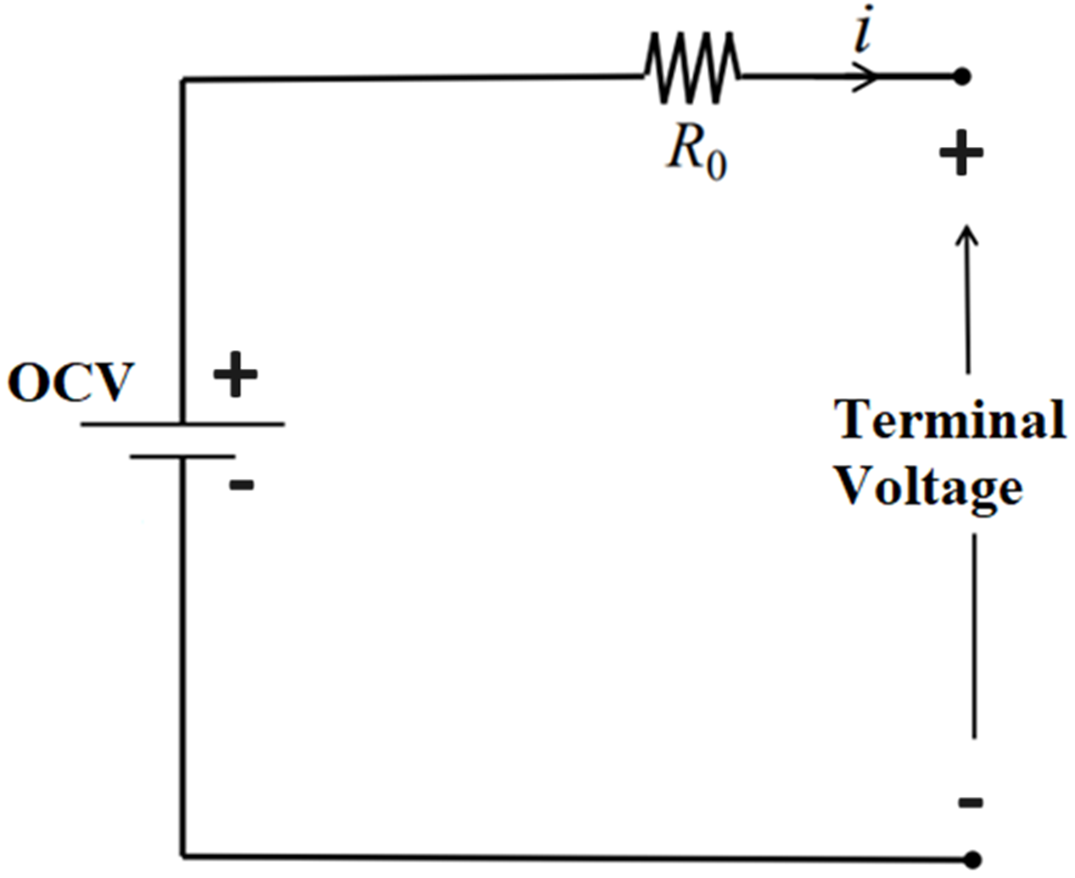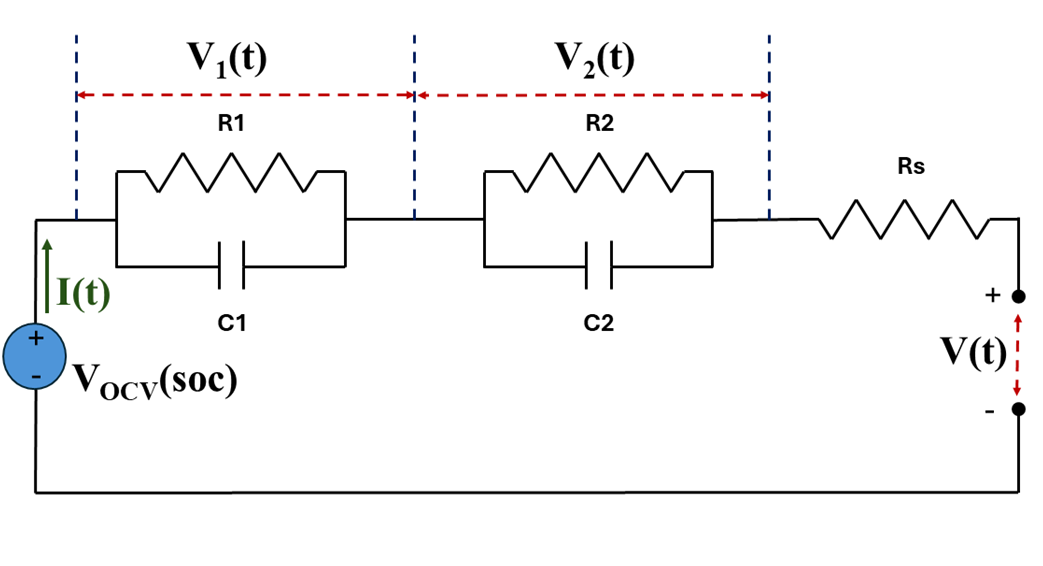🧠 Equivalent-Circuit Models (ECMs) for Battery Simulation
Equivalent-Circuit Models (ECMs) are powerful tools used to represent the electrical behavior of lithium-ion batteries through a network of electrical components — mainly resistors, capacitors, and voltage sources. These models balance accuracy and computational efficiency, making them widely used in Battery Management Systems (BMS) and State-of-Charge (SoC) estimation for real-time applications.
🔌 Simple ECM: Internal Resistance Model
The most basic ECM consists of an open-circuit voltage source V_OCV(SoC) and a single internal resistor R_int. This model estimates the voltage drop during battery load purely as a function of current and resistance:
$$ \ V(t) = V_{\text{OCV}}(\text{SoC}) - R_{\text{int}} \cdot I(t) \ $$
This configuration is computationally light and useful for high-level energy balance or quick diagnostics, but it lacks the dynamic behavior needed for transient response modeling.

⚙️ Advanced ECM: Dual RC-Branch Model
A more detailed model — as shown in Figure below — includes two resistor-capacitor (RC) branches to capture the dynamic voltage response more accurately. Each RC branch represents different time-scale processes in the battery (e.g., electrochemical and thermal diffusion). All components are considered functions of State of Charge (SoC) to better reflect real battery behavior.
📐 Governing Equations:
$$ \ V(t) = V_{\text{OCV}}(\text{SoC}) + V_1(t) + V_2(t) - R_s(\text{SoC}) \cdot I(t) \ $$
$$ \ \frac{dV_1}{dt} = -\frac{1}{R_1(\text{SoC}) C_1(\text{SoC})} V_1 - \frac{1}{C_1(\text{SoC})} I(t) \ $$
$$ \ \frac{dV_2}{dt} = -\frac{1}{R_2(\text{SoC}) C_2(\text{SoC})} V_2 - \frac{1}{C_2(\text{SoC})} I(t) \ $$
$$ \ \frac{d(\text{SoC})}{dt} = \frac{I(t)}{3600 \cdot Q_{\text{ref}}} \ $$
These dynamic elements capture transient effects, making the model suitable for control-oriented simulations and embedded BMS development.

🧪 Parameter Identification
To make ECMs reliable, model parameters such as ( R_1, C_1, R_2, C_2 ), and ( R_s ) must be identified from experimental data. This is often done through model identification techniques like least-squares fitting or optimization, and parameters are expressed as functions of SoC to ensure accuracy over the full charge/discharge range.
🔗 Ready to try it out?
Explore our AI-powered simulation tools at https://cathode.energy and build your own ECM models interactively!